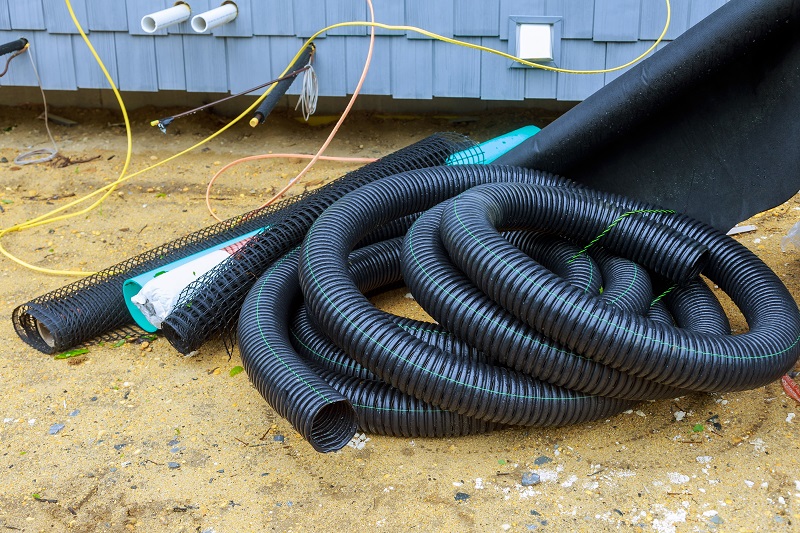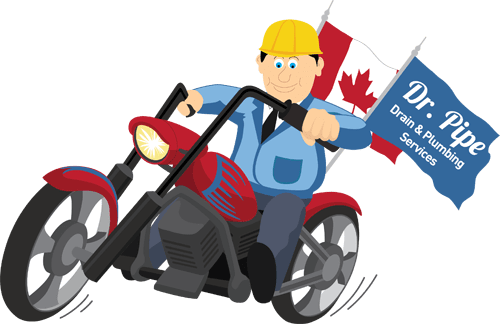Give us a call today: 416 663 4777 for a free upfront estimate!
Keeping Your Basement Dry
The best way to keep your basement dry and prevent flooding is to use several methods together. It just makes sense to use multiple layers of defense to keep your home protected. Three of the best methods include using a backwater valve, a sump pump, and weeping tile.

- Sump Pump: Installed in your basement, a sump pump will allow water to collect safely in a basin installed below your basement floor, then pump it away from the house. We can install both the pump itself and a backup power supply.
- Backwater Valve: Installed by our experts, a backwater valve blocks the line from your house to the city sewer line, allowing water to flow out of your home but not to flow back up into your basement in the event of heavy rains and flooding.
- Weeping Tile: These are pipes installed outside of your home, around the walls of your basement. Small holes allow groundwater to filter in and be carried the water away from the house, to a sump basin or elsewhere. Many older weeping tiles were made from clay and no longer function properly, so updating them is essential to flood prevention
Is Weeping Tile Installed Inside or Outside the Home?
Most often, weeping tile is installed outside of your home. Some homes in Toronto are too close together and don’t allow for work in the ground between them. In these cases, we are also able to install weeping tile from inside your house. This involves cutting through the walls in your basement to get through the concrete and installing it from the inside in much the same process we’d do outside.
How Does Weeping Tile Work?
Weeping tile allows water to filter in through an aggregate material like gravel and collect in a pipe that can then drain away from the foundation of your home. The collected water can be directed to a sump basin for your sump pump to pump out, or to the storm sewer.
Weeping tile refers to the drain system used to remove surplus earth water from your home’s foundation. Originally, the systems would use round tubes, placed from one end to the other end beneath the concrete of your basement floor. They created a pipe of sorts which was connected to tiles beneath your concrete floor, stopping at the catch basin. Originally the tubes had the appearance of tiles because they were crafted from clay. The tiles were often brittle and would become full of soil after a few years, making them ineffective. As time passed the tubes were manufactured out of concrete. Weeping tile is presently made of plastic. However, the name sticks with them.
Weeping tiles used to absorb water which is contained inside of the soil thanks to the small gaps which are left between the sections.
They also absorb water through porous clay. As time passes, these weeping tiles become partially or completely blocked thanks to soil erosion. When this happened, the tiles which were under the floor would lose the right slope needed to properly attach to the drain. When this took place, weeping tiles work became decidedly less effective because of full to overflowing water contained within the soil. Older homes will generally not have water escaping from those systems anymore.
Now, the plastic versions of weeping tile work because they are equipped with small perforations and holes inside of the pipe, though the majority of the pipe continues from the sump pit to the exterior of the floor drain. As such, historical troubles related with soil movement and blockage no longer plague new weeping tile.
Some older homes have weeping tiles which drain directly into the catch basin of their floors, which are then directly connected near where the sewer pipe leads water out of the home. The trap is placed near the end of the drain in order to prevent gasp from entering into the house through this pipe. Should the main pipeline become blocked because of roots from plants or trees or other natural causes, then sewage from bathrooms can back up the catch basin inside of the floor.
With additional waste water entering into the catch basin the water will continually back up further into your weeping tiles. It is important to be cautious here because waste water is dangerous for your health. It can have raw sewage which traveled from your toilets which can then get inside of your weeping tiles. If this continues without notice your weeping tile which is underneath your basement floor will become full until the floor drain spills over into the basement.
Effective Weeping Tile Installation
- Our experts will dig a small trench around the outside of your home to excavate the old, clay weeping tile. We’ll clean the foundation and remove the old pipe. From there, we pour new concrete to shore up the foundation of your home, seal any old cracks, and prevent new ones from forming.
- Next, we’ll fill the trench with a layer of gravel before laying the pipe and then covering it with another layer of gravel. This ensures the pipe is free from the soil while holding it in place and allowing water to easily filter in to be drained away from your foundation. The weeping tile can be connected to your sump basin if you have one. If you need one, our inspection will assess your situation and let you know.
- The soil is filled in over the gravel and there is minimal damage to the look of the property.
- Once the pipe is installed, we repair the concrete and clean the area leaving your home looking the same as when we started.
Why Dr. Pipe?
We treat your home the way we expect workers to treat our homes. That means coordinating with you from the moment you call for a quote all the way through the final work we perform. Our team will cover and clean everything in their work area so you don’t have the added stress of a mess to tidy up and we’ll finish as quickly and efficiently as possible.
We can also help with insurance and obtaining any permits or the potentially valuable, cost-reducing City of Toronto rebates you may qualify for when you hire a licensed and insured company like Dr. Pipe.
Give us a call today: 416 663 4777 for a free upfront estimate!




